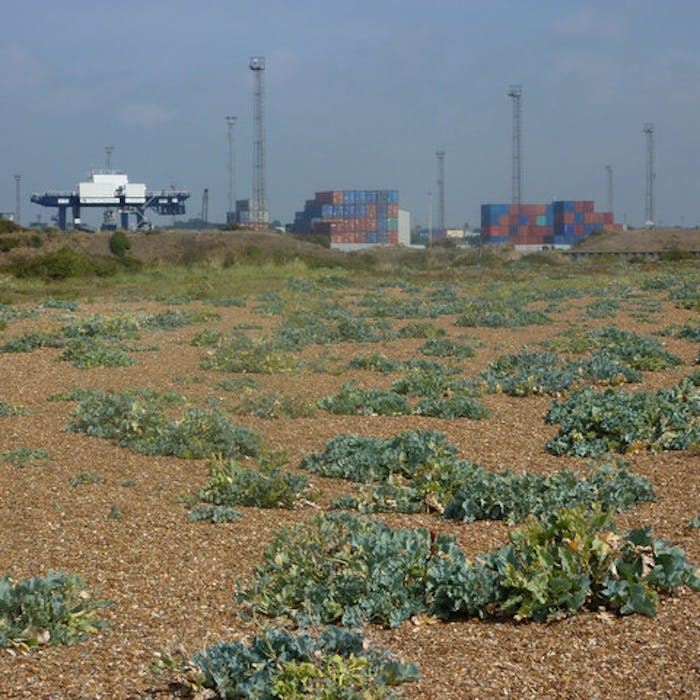
Sea kale
Sea kale, or crambe, is a species of halophytic (salt-tolerant) flowering plant in the genus Crambe of the family Brassicaceae. It grows wild along the coasts of mainland Europe and the British Isles. It is that giant cabbage-type plant commonly seen on stable shingle beaches.
The plant is actually related to the cabbage and was first cultivated as a vegetable in Britain around the turn of the 18th century. Blanched stems are eaten as a vegetable, in fact sea kale is one of the few vegetables we really can call our own. Unlike potatoes and carrots, it appears to be indigenous to the UK. In fact, so popular was it with our ancestors, that at one stage it became difficult to find. Sea kale has ven been recorded as being served to the Prince Regent George IV (1762–1830) at his seaside retreat - the Royal Pavilion in Brighton.
It was once pickled by the Romans in Britain to prevent scurvy - presumably they were missing their Mediterranean oranges and lemons!
Salad-seekers should be aware, though, that in the UK sea kale is protected under the Wildlife and Countryside Act and must not be picked without permission from the landowner.
In summer the sea kale blooms with white flowers. As well reproducing by seed, sea kale can also grow from detached pieces of its root.
Sea kale's stronghold in the south coast of England. It is also found along stretches of the East Anglian and Cumbrian coast. It can be found along Wales' northern beaches and in the extreme south-west of Scotland. It is thought that the construction of sea defences may have possibly caused the decline of this maritime flower in some areas, by destroying the shingle habitat on which it thrives. In other areas, however, it is on the increase - maybe because it is no longer as popular a foodstuff as it was in days gone by.
Traditionally sea kale was found - and cultivated - on sandy and shingle beaches, above the high tide mark. Its found on dunes on rare occasions, but only where there is an underlying layer of shingle.
Further reading
Links to external websites are not maintained by Bite Sized Britain. They are provided to give users access to additional information. Bite Sized Britain is not responsible for the content of these external websites.
